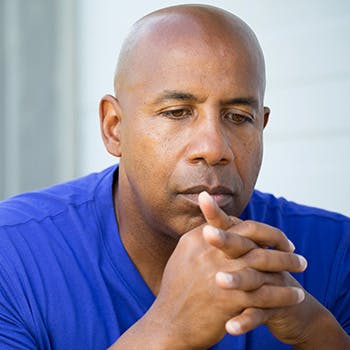Common Signs of Hemorrhoids

As most of us probably know, hemorrhoids can be a real pain in the butt…literally! Luckily, there are plenty of treatment options available to help provide relief from hemorrhoid-related discomfort, but knowing that you have hemorrhoids is the first step. The sooner you can identify the issue, the quicker you can find relief!
Because different types of hemorrhoids have different warning signs,1,2 understanding your symptoms can help you identify which type of hemorrhoids you are dealing with. Here, we’ll cover some of the most common signs of hemorrhoids for both types of hemorrhoids—external and internal. Keep reading to learn more about these two types of hemorrhoids and common signs that you might have them.
External Hemorrhoids: Four Common Signs
Typically more uncomfortable than internal hemorrhoids, external hemorrhoids are hemorrhoids that form under the skin that surrounds the anus.3 They are typically caused by straining4 and the symptoms can be made worse by further straining or rubbing the area.2
The common signs of external hemorrhoids are:
- Itching. Anal itching or irritation in the anal area are very clear signs that you might have external hemorrhoids.1,2
- Swelling or lumps. Another typical sign of external hemorrhoids is swelling in the anal region. This often takes the form of one or multiple lumps around your anus that are hard and tender or painful to the touch.1,2,4 These lumps are usually bluish in color.4
- Bleeding. It’s possible for blood clots to form inside of a hemorrhoid. When this happens with an external hemorrhoid, it’s called a thrombosed hemorrhoid and can be accompanied by inflammation and sharp pain. This clotted blood can leak out of a hemorrhoid and cause noticeable bleeding.1,2,3,4
- Pain and discomfort. Pain or ache in the anal region, particularly while sitting down, is a sign that you might have external hemorrhoids.1,2 Sensations of swelling and pressure can occur in all cases of external hemorrhoids, even when the hemorrhoid is not thrombosed.4
While none of the above signs of hemorrhoids are pleasant, the good news is that external hemorrhoid symptoms will often clear up on their own in just a few days.2 Talk to your doctor or a trusted healthcare provider if your hemorrhoids have not started to get better after a week or if you experience rectal bleeding during bowel movements.1
Internal Hemorrhoids: Two Common Signs
The second common type of hemorrhoids occurs inside the lower region of the rectum.3 In general, internal hemorrhoids are fairly painless, but they may bleed. In more serious cases, an internal hemorrhoid can prolapse beyond the anus, which can cause a more severe set of issues.3
The two most common signs of internal hemorrhoids are as follows:
- Bleeding. If you have an internal hemorrhoid, it’s not uncommon to experience some bleeding from your rectum. You may notice some blood on your toilet paper after wiping, in the toilet after a bowel movement, or on your stool itself.1,2,3 This bleeding should be painless and the blood will be bright red in color.1,2,3
- Prolapse. It is possible for an internal hemorrhoid to prolapse, which means that it falls or is pushed out of the anal opening.1,2
Internal hemorrhoids are classified into one of four grades, dependent on severity:4
- Grade 1: Fully internal, no prolapse.
- Grade 2: Prolapsed but recedes back into the rectum on its own.
- Grade 3: Prolapsed and can be pushed back inside, but does not recede on its own.
- Grade 4: Prolapsed and unable to be pushed back inside. Typically accompanied by extreme pain.
When a hemorrhoid prolapses, it may accumulate a small amount of stool and mucus, which causes further irritation and itching.3 It may feel like stool is stuck to the anus and impossible to wipe clean after a bowel movement.4 If this occurs, talk to your doctor or a trusted healthcare professional.
Other Anal Symptoms
While the above signs are often symptoms of internal or external hemorrhoids, they may also be signs of other issues. Symptoms like rectal bleeding may be indicative of other digestive or rectal issues.1,2 If you experience abnormal rectal bleeding or changes in the color or texture of your stools, consult a doctor or healthcare professional about your symptoms. If you experience lightheadedness, dizziness, faintness, or extreme amounts of bleeding from the rectum, seek medical attention immediately.1
We hope this article has helped you better understand what warning signs to look out for and when anal symptoms are cause for concern. While nobody wants to have internal or external hemorrhoids, educating yourself on all the signs of hemorrhoids is the first step on your journey to relief.



